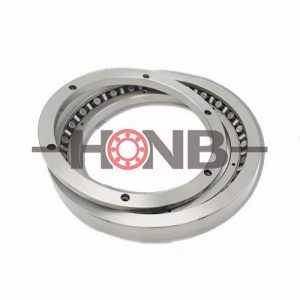Home > News > Product Knowledge > The main factors affecting the operation process of rust prevention oil degreasing
The main factors affecting the operation process of rust prevention oil degreasing
Author: hongyuanTime:
The quality of degreasing mainly depends on four factors: degreasing temperature, degreasing time, mechanical action and degreasing agent.
1. Degreasing temperature
Generally speaking, the higher the temperature is, the more thorough the degreasing is. This is because of three reasons. First, the temperature makes the physical properties of the grease change, for example, rustproof grease with high dropping point, petroleum jelly, solid paraffin, etc., which are difficult to wash at lower temperature even with high concentration of alkali solution. However, when the temperature of the oil is raised, their viscosity decreases, and even droplets are formed to facilitate removal. Secondly, it promotes the chemical reaction. Generally speaking, for every 10 degree increase in temperature, the chemical reaction rate doubles. Third, it accelerates the movement of surfactant molecules, thus promoting the role of wetting, emulsification and dispersion. As the temperature increases, the solution’s ability to dissolve dirt also increases.
However, not all occasions are the higher the temperature is better, a variety of degreasing agents have their own suitable temperature range, in the use of certain types of surfactants in the degreasing solution, too high a temperature will make the surfactant precipitation gathered as oil beads attached to the surface, resulting in uneven phosphate film hair flower.
2. Degreasing time
In the degreasing operation, must ensure that there is sufficient degreasing time, pressure injection degreasing time is generally 1.5 to 3 minutes, dip degreasing for 3 to 5 minutes (depending on the type and amount of oil). Increase the degreasing time, that is, to extend the contact time between the degreasing liquid and the oil, so as to improve the degreasing effect. The more oil stains there are, the longer the degreasing time needs to be. In the line operation, it is often not allowed to use too long time, so generally use the spray to degrease for 1 minute first, and then use the dip degreasing for 3 minutes.
3. Mechanical action
In degreasing, with the help of pressure injection or stirring and other mechanical action is very effective, because, when spraying to force the fresh degreasing solution and the parts surface has good contact, and the entire degreasing liquid content uniform, conducive to improving the degreasing effect; spraying rely on mechanical force to promote degreasing agent penetration and destruction of the oil film, so as to effectively force the oil from the surface of the parts; spraying to promote the oil from the parts emulsification and Disperse in the degreasing solution to prevent the oil from being re-absorbed on the surface of the cleaned parts.
In medium and low temperature degreasing, the mechanical action is particularly important. Generally speaking, pressure injection is more than one times faster than dip degreasing. Spraying pressure is usually (0.1~0.2) MPa (the degreasing agent used for pressure spraying must be low-foaming to avoid excessive foam affecting normal operation and loss of degreasing solution), and dipping degreasing cannot be considered as static dipping, and must be equipped with a circulation pump to keep stirring the solution, and the circulation volume per hour is about 5 times of the tank liquid volume.
4. The influence of degreasing agent on the degreasing effect
The composition of the degreasing agent and the method of use have a great influence on the degreasing effect. For example, degreasing with alkaline solution containing surfactant is better than degreasing with alkaline solution alone. For high dropping point of solid or semi-solid grease, cleaning with solvents than with other degreasing effect is effective. In order to improve the emulsification and dispersion of oil, appropriate to increase the content of surfactants in the degreasing agent is effective, different varieties of surfactants and different alkaline substances make a certain difference in the degreasing effect, a good degreasing agent are after a large number of tests, the proportion of its components with each other to repeatedly screen and determine.
For alkaline degreasers containing surfactants, the most effective cleaning effect is at the upper limit of the critical micelle concentration of surfactants. In the process of use, the degreasing agent will be consumed continuously and the concentration will be reduced, so it is necessary to refill the degreasing agent periodically to maintain the necessary concentration. The degreasing effect of the degreasing agent and the concentration are not linearly increasing, so for the case of high degreasing quality requirements, the method of greatly increasing the concentration should not be adopted, but the method of secondary degreasing should be used, and the two degreasing solutions can be the same, and there is no need to increase the concentration.
In actual use, all factors must be considered so that all factors are controlled in the best condition to make the degreasing achieve satisfactory results.


We have rich experience on precision bearing manufacturing and are ranked NO.1 in China and NO.3 all over the world.
We can tailor the overall solution for the use of precision bearings.
HONB– Accountability & Innovation
Products
- YRT rotary table bearing
- YRTS rotary table bearing (high speed series)
- YRTM with integral angular measuring system series
- ZKLDF axial angular contact ball bearing series
- RA series crossed roller bearing
- SX series crossed roller bearing
- CRBH series crossed roller bearing
- RE series crossed roller bearing
- RU series crossed roller bearing
- RB series crossed roller bearing
- XR/JXR series crossed taper roller bearing
- Crossed roller bearing
Contact Us

✉️ bearing20@hyzcgroup.com
📞 +86 15236685001





